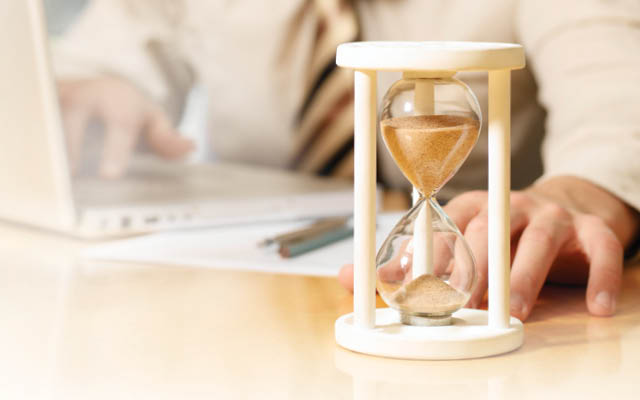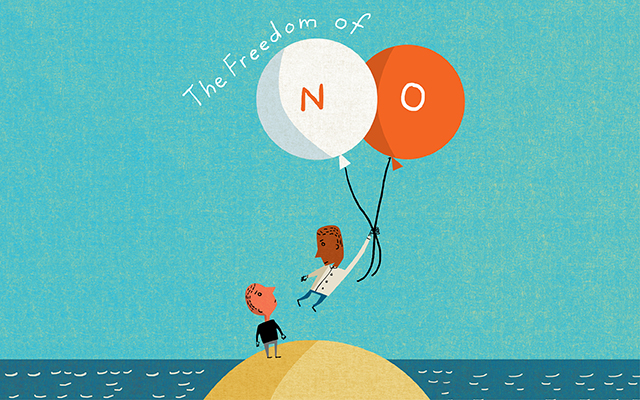It’s an all-too-familiar feeling: the racing brain, the tight stomach that says we’ll never get everything done. “There aren’t enough hours in the day” we cry, and then we watch, helplessly, as more commitments appear on our schedule.
Stephan Rechtschaffen, MD, cofounder of the Omega Institute for Holistic Studies in Rhinebeck, N.Y., and author of Time Shifting, suggests that time anxiety isn’t just one stress among many. “Most of the stress that people feel in any area of their lives is rooted in the feeling of not having enough time,” he says. The solution? Dwelling in the present moment, where, surprisingly enough, there’s always plenty of time.
Stress Source
Relentless time pressures
The feeling that we don’t have enough time to do everything we should — combined with a lack of comfort about doing less, and a lack of knowledge about how to create a sense of peace in the present moment.
Barriers to Overcome
The idea that time stress is normal: Society and the media help “normalize” the idea that modern life has to be crazily busy. Rechtschaffen says we’re taught that “the only way to get ahead is by pressing our foot on the accelerator.”
The need for stuff. There’s a direct link between our “always-more” lifestyles and our expanding, time-eating to-do lists. “We have to have that big TV, those multiple phones,” Rechtschaffen says. “We overschedule ourselves to make the money to support our standard of living.” (For more on this stress-spend cycle, see the “The Wanting Mind.”)
Dissatisfaction with where and who we are. “Many of us feel a push to be elsewhere, to do something else,” says Rechtschaffen. “We feel that we haven’t accomplished enough in our lives.”
Future-obsessed. Worrying about what’s coming keeps us out of the present moment and in the time trap, Rechtschaffen says. “Anxiety is stress related to the future. What’s coming up might not be good — and it’s right around the corner.”
How to Cope
Reject the need to rush. “The stress is not in the to-do list, it’s in our reaction to the to-do list,” says Rechtschaffen. “We need to acknowledge that we are creating time stress internally.” (See “What’s the Rush?” for more tips to slow down.)
Make friends with the present moment. “Really dwelling in the present moment requires us to accept how we are feeling in that moment. We may be fearful that we won’t complete our list of tasks. But if we really accept that fear, in the moment, there will be no stress. Stress comes only when we fight the fear.”
Focus on the task. When a great basketball player has to make a game-winning shot, he or she is likely to be totally relaxed, totally focused on the job,” says Rechtschaffen. “There’s nowhere else the player wants to be, no other moment except right now.”
Learn to time-shift. The title of Rechtschaffen’s book refers to the practice of shifting in time the way we shift gears on a bicycle. “We have to be open to the rhythms of different situations and different people,” he explains. “Knowing when to be speedy — when an urgent situation requires it — and when to downshift to a slower rhythm, say to talk to a friend or a child, will give us a sense of ‘enough time’ if we practice it.”
Rest and recharge. “One of the most successful consultants I know takes time for a regular walk around the lake,” says Rechtschaffen. “Allowing ourselves to really relax is what helps us handle tasks when we have to.”
Stress Solver
Tai chi practice can help you learn how to stay rooted in the present moment.
Tai chi is what the Chinese call an “internal martial art.” Its routines look like slow-motion kung fu, but its purpose is to make you a meditator rather than a fighter; you focus on your internal self, not an external opponent, as you move smoothly and mindfully through set patterns. Increasingly popular in the West, the discipline is intended to make you deeply aware of your mind and body and to bring balance and health to everyday life. In fact, Twin Cities–based Natural Step School of Tai Chi founder Colin Snow calls it a method for self-healing through the practice of “meditation in movement.”
Origin: The oldest documented tradition of tai chi, the Chen family style, dates back to around 1640, but the major philosophy it embodies — that all things in the universe, including the body, express a dynamic balance between the active, male principle (yang) and the yielding, female principle (yin) — is about 2,400 years old.
Benefits: “In tai chi, we connect to the body’s inherent wisdom, the most profound medicine: its ability to heal itself,” says Snow. It deepens the breath and expands lung capacity, increases the dispersal of oxygenated blood, facilitates the flow of Qi (“chee”) energy, strengthens the immune system, and improves skeletal alignment. But tai chi’s most immediate benefit is meditative: “We’re addicted to this idea that exercise has to be challenging,” he adds. “Tai chi stands that concept on its head. By revealing to us the way of inner peace, it reunites mind, body and spirit, keeping us present in the moment to live our lives authentically instead of merely struggling through.”
Simple Steps: Beginning tai chi training consists of learning specific, simple body postures and practicing smooth transitions from one to the next. “But we are also embracing the spiritual path of tai chi through the four fundamental principles,” says Snow. “The first we call ‘rooting’: rooting our awareness in the physical self, the separation between mind and body narrows and consciousness expands into the present moment.” The principle of “sticking” is mental. As Snow puts it, “we learn to truly listen and recognize the silent witness within, which releases the mind from reactivity, judgment, the desire to control life, things, people.” “Yielding” is allowance, both a physical and mental openness that flows from the heart. This spirit of enjoyment guides us to personal freedom and spontaneous, authentic living. And the fourth principle is “what arises out of the other three: action out of nonaction, or what the Chinese call ‘wu-wei’.” It’s a way of being in the world in which everything we do feels simple, natural and unforced, because ultimately we have come full circle and are once more aligned in the Tao of life.”
This article originally appeared as “So Little Time” in the December 2008 issue of Experience Life.





This Post Has 0 Comments